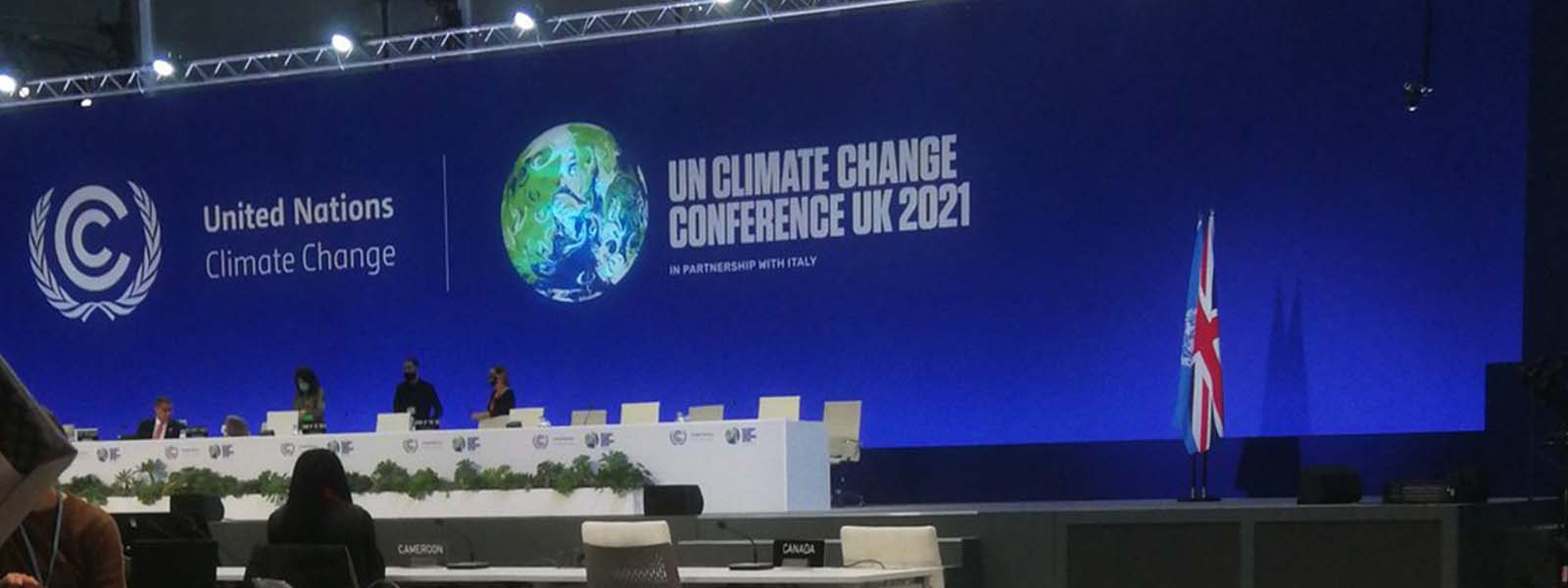Professor Karen Turner
So to add to the ongoing ‘good COP’, ‘bad COP’ discussions emerging in the media and wider public discourse, here are some of my highs, lows and takeaways (which I discussed with Paddy O’Connell on BBC Radio 4’s Broadcasting House) as we move into the second week of the conference.
Notable progress at the COP26 Conference
Let’s start with the positive. Before we get into the detail of what’s emerged at the conference so far, it was hugely energising and motivating to see the commitment (in the face of some pretty dire weather in Glasgow) of those involved in the climate marches in Glasgow, across the UK and globally. It is as much the voices outside of the conference centre, as within, who can and must propel us to a more sustainable future, although, as former US President Obama urged as he helped launch the second week, what we really need is for those inside and outside the official COP to listen to each other more.
From within the conference halls, there were three key plus points that emerged last week.
- Pursuing 1.5 degrees Celsius target. There was broad consensus amongst the G20 leaders (just before the official start of COP26) to pursue the more ambitious 1.5 degrees Celsius target set out in the Paris Agreement. The G20 countries account for 80 per cent of the global CO2 emissions.
- Delivering in the short-term/ ‘decisive decade’. Action is crucial for the Glasgow COP given that, while Paris clearly delivered on ambition and target-setting, most would agree that action beyond many (but not all) nations proposing and/or putting in place required legislation etc. has been limited. There have been some interesting ‘ups and downs’ here. For example there was a very mixed reception to the Indian Prime Minister Narendra Modi’s announcement that India would deliver on net zero emissions by 2070, 20 years after the target date of many richer nations. However, what was key within the announcement were India’s plans for between now and 2030 in what has been labelled the ‘decisive decade’. Apparently, some ‘ran the numbers’ and India’s proposed shifts to meeting its energy needs through renewables may still in fact align with meeting the 1.5 degrees Celsius target. The challenge seemed to be that the richer nations will need to deliver on the financial support that they committed to in the Paris Agreement.
- Enabling and promoting public/private investment in low carbon technologies. More generally, mobilising public and private finance to support mitigation and adaption efforts at home and abroad will be key to tackling the climate crisis. On Day 3, global finance ministers gathered to discuss the mobilisation of private and public finance. Here, the Chancellor, Rishi Sunak, announced that all UK financial institutions will need to publish their plans to transitions to net zero by 2023 and promised the UK would become a ‘Net Zero Aligned Financial Centre’. This was a positive signal, but concerns have been raised around the absence of legal targets to underpin these plans, instead with reliance largely on driving financial markets through the signalling of intent and commitment at COP26.
So, let’s be optimistic: the first week gave us a positive start but, overall, it would have been good to see more commitment on a fuller set of interim ambitions and actions for the ‘decisive decade’ beyond the declarations on reducing methane emissions and ending/reversing deforestation by 2030 (none of which received the support of ALL nations). Hopefully this is something that will develop further by the end of the conference.
Progress to be made in the second week of COP26
For me there are two key interrelated areas where action/ambition/discussion needs to be ramped up significantly in this second week, and which must be addressed even if the target setting on mitigation and on adaptation is sufficiently ambitions.
- Carbon pricing. Agreeing a financial cost on putting CO2 emissions into the atmosphere that is ultimately greater than the cost of acting to reduce/remove them, and ensuring international coordination on such carbon pricing, will be critical to climate change efforts. And here’s why.
- The risk of offshoring/meeting targets by shifting emissions overseas. Offshoring emissions (along with jobs and investment) is a real risk as I set out in my blog just before the start of COP26. Individual countries might meet their national emissions targets (which focuses on emissions produced within their own borders) but this won’t reduce global emissions or warming when in reality these emissions are just being produced elsewhere e.g., when firms move locations to avoid additional financial costs/regulations to limit emissions. As discussed in my previous blog, we have some experience of this in Scotland, where, while not as a result of climate action, the country’s biggest reduction in emissions was achieved through the closure of the steelworks at Ravenscraig in the 1990s. This had long-lasting impacts on lives and livelihoods of communities living just miles from the current COP26 venue. If such outcomes are repeated, this will undermine efforts to ensure ‘just transitions’. Effective carbon pricing can help avoid this by, for example, ensuring firms who do act to reduce their emissions though large-scale industrial decarbonisation do not lose competitiveness in international commodity markets, which will simply shift emissions, jobs and investment elsewhere. There have been calls from the International Chamber of Commerce for the conference to act on this issue, which does link to explicit articles in the Paris agreement. However, I certainly haven’t seen any news reflecting actual discussion on this issue so far. This is something I hope I will see by the end of this closing week and/or in the emerging ‘Glasgow agreement’.
